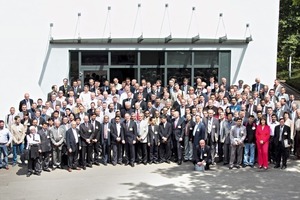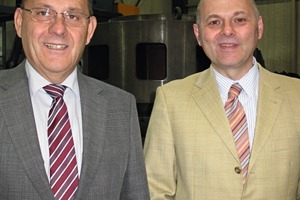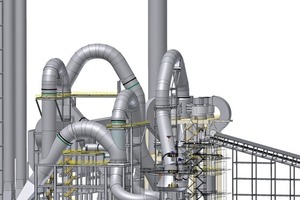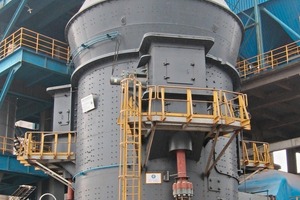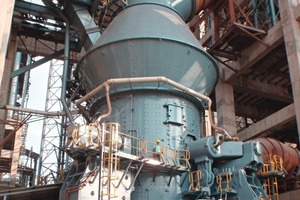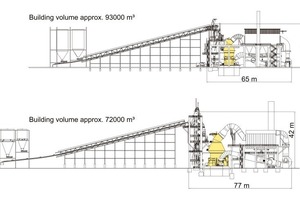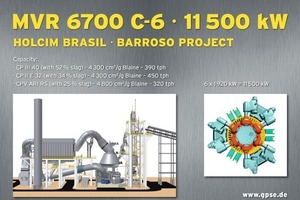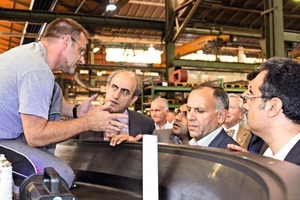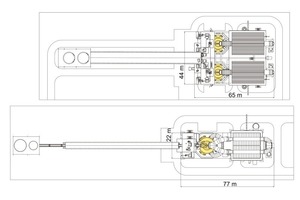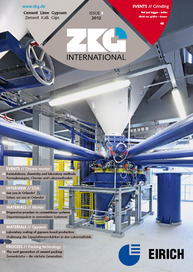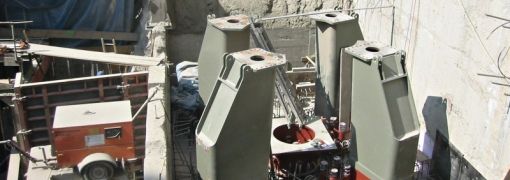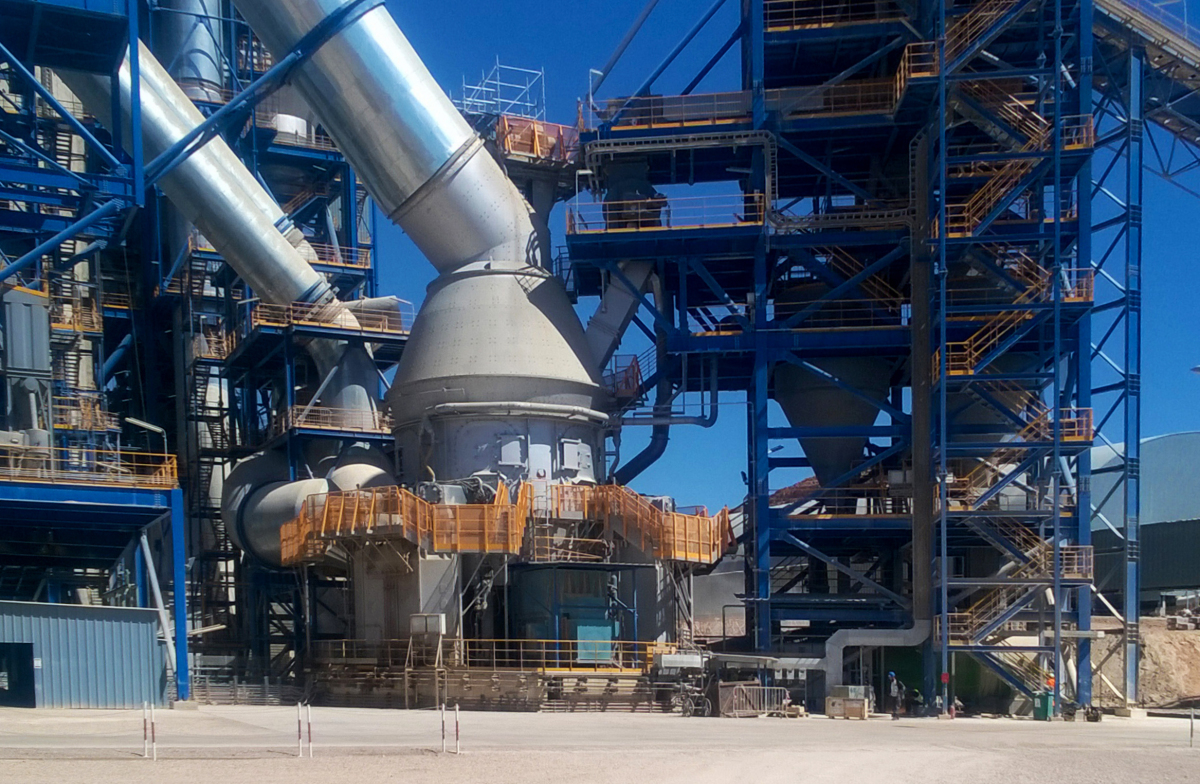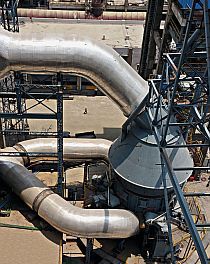Gebr. Pfeiffer SE welcomed nearly 200 participants to the Pfeiffer Convention 2012 in Kaiserslautern (Fig. 1). A varied and interesting selection of lectures set in an attractive supporting programme awaited the participants, who were welcomed by Otto Jung (Fig. 2), Executive Board Member of Gebr. Pfeiffer SE. At the end of the business year on 30.06.2012 he handed over the responsibility of the technical directorate to Dr. Robert Schnatz (Fig. 2). The last convention had focused on the introduction of the new MVR mill design with the MultiDrive®, and this time it was shown that the new mills and drive solutions had already proved extremely successful in operation.
Quality products
At the start of the lecture programme Gerold Keune (Gebr. Pfeiffer) gave a brief review of the company’s history. Gebr. Pfeiffer SE has been a family-run company ever since it was founded in 1864. Everything is therefore planned for the long term with a high level of awareness for the quality and reliability of the company’s products.
Reliable single-mill solutions
Dr. Robert Schnatz (Gebr. Pfeiffer) discussed new trends in the cement industry. Although more than 90 % of the mills used in many areas are roller grinding mills, the percentage used for cement grinding is still around 40 %, but with a rising trend. He pointed out that single-mill solutions make flexible and profitable production possible (Fig. 3) although this then requires the mill to have a high and reliable level of availability. The current trend is towards semi-turnkey projects and Gebr. Pfeiffer responded to this trend.
Active redundancy
Klaus-Peter Lukas (Gebr. Pfeiffer) gave some details of Gebr. Pfeiffer’s product range. With the proven MPS mills (Fig. 4) and the newly developed MVR mills (Fig. 5) with MultiDrive® the company is well positioned to cope with a wide variety of demand profiles. The MPS mill, which was designed about 50 years ago and since then has been continuously developed, is characterized by its robust and smooth operation even with difficult mill feeds. The new MVR mills with 4 or 6 independently suspended rollers, which can be swung out independently with the operating hydraulic system, run on flat grinding tables, unlike the MPS mills, and therefore have flat grinding gaps. They are recommended for grinding cement raw materials, cement clinker, granulated blast-furnace slag and pozzolanas at high and highest outputs. The MultiDrive® drive system with up to six identical drive modules is also characterized by its active redundancy. With drives of currently up to 12 000 kW it is possible to supply cement plants, even those with high outputs, with just one mill (Fig. 6). Using the example of an actual cement project Lukas was able to demonstrate that average cost savings of 25 % can be achieved for the machinery, building construction, electrical equipment and infrastructural measures.
High level of availability and easy maintenance
Andreas Halbleib (Holcim Group Support) reviewed the background of the latest MVR mill projects of Holcim (Brasil) S.A. at the Barroso plant (through Cemengal as the General Contractor) and Cement Australia in Port Kembla. The ever more frequent failures of the gear units in large mills were a crucial factor in the purchase of new MultiDrive® mills. Good results had been obtained with an MPS mill with MultiDrive® in Val de Seine project in France. A mill and drive system was therefore required that had greater reliability, better TCO with reduced downtimes and production stoppages (e.g. by continued operation with a reduced number of rollers), shorter procurement times for spare parts and all this coupled with the ability to provide high drive ratings > 6000 kW. The decision in favour of the MVR mill with MultiDrive® system was made after a risk assessment. Experience with the MultiDrive® system in the Val de Seine had shown that the torque peaks that occurred initially could be minimized by suitable control strategies. The results have shown that the mill can be operated for grinding both granulated blast-furnace slag and clinker with only one set of parameters. Both a static check and operation in the master-slave mode programmed in the higher-level PLC system have proved successful for controlling the mill. Current tests have shown that the system can also be operated effectively at a fixed speed, which means that it is possible to dispense with a frequency converter when, for example, grinding raw meal.
Modern cost-efficient grinding plants
Rudy Blum (Holcim Support Group) first described the Barroso project (Fig. 7). Fives FCB, Cemengal, Mendes JR and Gebr. Pfeiffer were working together in the project on a reliable and cost-efficient solution for a new cement line with only one mill. The semi-turnkey project was composed of various packages. One of these was a mill for grinding cement with an output of 450 t/h for a cement plant producing 4500 t/d clinker and 2.6 million t/a cement. The MVR 6700 C-6 mill will grind various grades of blended cement containing up to 90 % clinker and up to 65 % slag at finenesses of 4000–4800 cm2/g Blaine. By using the single-mill strategy it is possible, among other things, to achieve a cost-efficient solution with a low specific investment cost per tonne of cement. The project should be completed in mid 2013 after only 21 months.
A grinding plant with an MVR 6000 C-6 mill is planned for the Port Kembla project in Australia. The grinding will comprise 208 t/h CEM I cement (consisting of 90 % clinker, 5 % limestone and 5 % gypsum) alternating with 190 t/h granulated blast-furnace slag (consisting of 95 % slag and 5 % gypsum). The required annual capacity is 1.1 million t cement and granulated blast-furnace slag. Plant availability and reliability were important aspects as the plant is to be operated fully automatically round the clock and at night without supervision. It is also possible for the mill to continue to operate at reduced output if a roller fails. The cost of work as well as of plant components is very high in Australia. It has therefore turned out to be more cost-efficient to preassemble the plant components in Spain and ship them from there to Australia as modules. The building work as well as the mechanical and electrical installation will be carried out by local firms. A cost-efficient and environmentally friendly state-of-the-art solution for the entire plant has been found jointly with Cemengal.
Low wear
Dr. Caroline Woywadt (Gebr. Pfeiffer) reported on the experience gained over more than 20 000 operating hours with MVR mills and the MultiDrive® system. Active redundancy, standardization, only one hydraulic system for operation, and maintenance are just some of the features that have proved successful as part of the new mill strategy. The new mills had been tested from the laboratory scale onwards. Many aspects have been taken over from the proven MPS mills. The process design, the safety factors and the levels of the specific grinding forces as well as the classifier and wear protection system have been retained; but the capacity range, the number, geometry and suspension system of the rollers as well as the drive by the MultiDrive® are different. The active redundancy for the rollers and drives makes it easier to maintain the grinding mill. Smaller mill sizes for the same or higher outputs are an advantage, especially for modernization projects. The new mills make it possible to achieve efficient and flexible grinding systems. Initial results with raw material grinding show a very low specific wear rate of 1.3 g/t after 8000 operating hours.
Modern manufacture
The modern “Made in Germany” manufacture impressed the participants during a guided tour through the plant (Fig. 8). Its in-house manufacturing means that Gebr. Pfeiffer is able to meet its own quality demands and also react flexibly to customer’s spare parts requirements in an emergency.
Sticky mill feed
The second day was devoted to various projects from the cement and lime industries. Dr. York Reichardt (Gebr. Pfeiffer) started with a description of the grinding of extremely moist raw materials using the example of Mordov Cement in Russia. Raw material moisture levels of up to 25 %, which lead to agglomeration of the feed material with edge lengths of up to 100 cm, required various adjustments to the grinding system. He summarized the situation by saying that “this demanding task could only be solved jointly with the customer and by taking account of the individual conditions”.
Grinding composite cements
Wolfgang Stoiber (Lafarge) described the Kujawy project in Poland. The aim of the project was to create a 1 million t/a grinding plant with adequate drying capacity as the intention is to produce cements with a low clinker factor using materials such as limestone, fly ash, FGD gypsum and granulated blast-furnace slag with varying moisture levels. This should also reduce the specific energy consumption for the same quality of cement. A MPS 5300 BC mill is used with an SLS 5300 BC classifier and a fan from Venti Oelde with a volume flow of 930 000 m3/h. The mill has sufficient capacity to allow the use of both dry and wet fly ash. Exhaust air from the cooler is used for the drying. Initial low-frequency vibrations were eliminated by optimizing the feed system, raising the material bed by adjusting the dam ring, increasing the water injection from 8 m3/h to 10 m3/h and increasing the ventilation. The hydraulic pressure was reduced from 130 bar to 100–110 bar. The use of 350 g/t grinding aid has also proved beneficial. Comparison trials have shown that the water injection has no effect on the product quality. With dry fly ash the VRM is able to produce the same product quality, in this case for a CEM II A-V 42,5 R cement, with a ball mill. The results produced by the grinding plant are more than satisfactory with respect to both output rate and product quality and with a lower energy consumption.
Pressure-shock-proof coal grinding
Rüdiger Sonnen (Gebr. Pfeiffer) spoke about the Lixhe project for the installation of a new coal mill for which existing installations had to be adapted and re-used. The decision was made in favour of an MPS 225 BK mill with an SLS 1800 BK high-performance classifier and a pressure-shock-proof rotary lock feeder. The design conformed to ATEX in accordance with Directive 94/9. Construction started on 03.02.2011 and the plant was installed on 13.04.2011 after only 32 days. It was only through close cooperation that the construction could be completed in such a short time. The constricted conditions were a particular challenge – the mill, for example, had to be transported through a relatively small opening in the existing building. Successful conclusion of the project was made possible by external pre-assembly, final assembly and exact logistical planning. The acceptance certificate for complying with or exceeding the guarantee values was signed on 17.06.2011.
Trends in grinding
Dr. Robert Schnatz followed with a review of the current trends in grinding. In addition to the capital investment costs the maintenance and repair costs as well as the availability of modern grinding plants are clearly crucial aspects in the choice of a grinding system. Vertical mills are energy-efficient grinding plants for grinding both raw meal and cement. Although roller presses also have a low specific energy consumption when grinding raw meal they cannot at the moment be used for outputs > 500 t/h. MVR and MPS mills are also recommended for grinding cement and granulated blast-furnace slag as they have high outputs, high energy efficiencies and good drying capacities and are easy to service. This means that they can produce good products with comparatively low capital investment costs.
Years of experience with lime slaking plants
Michael Hahn (Gebr. Pfeiffer) gave a description of Cementos Progreso’s second lime hydrating plant in San Miguel/Guatemala. Gebr. Pfeiffer had already supplied the works with a lime hydrating plant of the same size in the past. Soft-burnt lime is transported from a feed silo to the slaking plant (type KLV 09/1250-6.3) via a belt weigh-feeder. The first classifier (type SLV 800) separates the first product – an extremely pure hydrated lime used for, among other things, sugar production, water treatment and the coarse fraction is transported to a second classifier. This operates in closed circuit with a ball mill (type MRD 1.8 x 5.5 m) and provides the second product – a hydrated lime for producing building materials. The mill is fed from both ends and the ground material is drawn off centrally from below.
2014: 150 years of Gebr. Pfeiffer
After the conclusion of the lecture programme Klaus-Peter Lukas said farewell to the participants with information about the next Pfeiffer Convention in 2014, which will probably take place in April when Gebr. Pfeiffer celebrates the company’s 150th anniversary.

